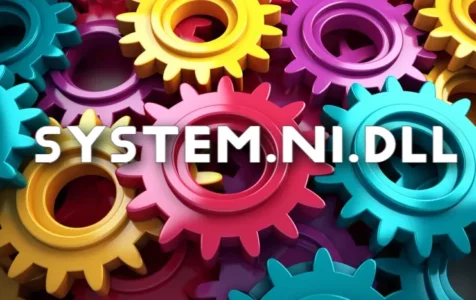System.ni.dll, a file in the Windows operating system, often raises questions among users. It’s a “System Native Image DLL” and an integral part of the Microsoft .NET Framework, which is a collection of development tools and libraries for creating various applications. This framework is popular for its ability to support different programming languages in software development.
The core of the .NET Framework is the Common Language Runtime (CLR), a virtual machine that manages security, memory, and exception handling for .NET applications. System.ni.dll, part of this runtime environment, contains pre-compiled code that helps programs run faster. These pre-compiled “Native Images” are optimized for specific system instructions to improve performance.
Is System.ni.dll Safe to Run?
Given its critical role in supporting .NET Framework applications, system.ni.dll is generally safe to run. However, it’s essential to note that, like any system file, it can be targeted by malware or viruses. A legitimate system.ni.dll file will usually reside in a directory path like C:\Windows\assembly\NativeImages_v4.0.30319_32\System\ along with other .NET Framework files. If you find this DLL file in an unusual location, that could be a red flag.
A considerable measure to determine the legitimacy of the system.ni.dll file is checking its digital signature. Within Task Manager, you can add a column to display verified signers. A file with the label “Unable to verify” might warrant further investigation. However, this method isn’t foolproof, as some legitimate files might not be digitally signed.
Expert Tip: For smoother PC performance, consider using a PC optimization tool. It handles junk files, incorrect settings, and harmful apps. Make sure it's right for your system, and always check the EULA and Privacy Policy.
Special offer. About Outbyte, uninstall instructions, EULA, Privacy Policy.
Can System.ni.dll Be a Virus or Malware?
Technically, any file on your system, including DLL files, can become corrupted or replaced by malicious versions designed to seem like legitimate system files. If you suspect system.ni.dll is a virus or malware because your antivirus flagged it, or due to unusual system behavior, it may be due to a false positive or an actual infection. Using resources like VirusTotal to scan the file using multiple antivirus engines can provide further clarity.
How to Fix System.ni.dll Related Issues
If you’re facing issues such as error messages or suspicious behavior associated with system.ni.dll, there are several steps you can take:
- Perform a Virus Scan: Ensure that your antivirus software is up-to-date and conduct a full system scan. If the file is indeed malicious, your antivirus should handle it
- Use System File Checker (SFC): Run
sfc /scannowin Command Prompt (opened as an administrator) to repair corrupted system files. - Perform a System Restore: If recent changes are causing issues, revert your system to a previous state when everything worked correctly.
- Reinstall .NET Framework: Uninstall and then reinstall the .NET Framework to replace the problematic system.ni.dll file.
- Engage with Community Forums: Seek solutions from community forums such as Microsoft’s or other tech support sites where users share their experiences and solutions for file-related errors.
- Maintain Regular Backups: Regularly create system restore points and back up critical data to ensure you can revert to a safe state if necessary.
In summary, handle system.ni.dll issues with care, as it is a crucial component of the .NET Framework. Correct repair procedures can maintain smooth system operation and security.
